FISHING REPORT: Get your gear in gear! A little lube keeps your reel humming
Maybe it’s just me.
Sure, it’s enjoyable to get out on the water, dock or shoreline to cast and hope. Might be nothing better.
But you know what’s a close second: Preparing to go fishing. Deciding which rods-and-reels are making the rotation this time … which combos of hooks, lures, weights, etc., will tag along … what extras to add to the Plano, just in case Plans A, B and C go awry.
It’s not just the necessary logistics of it all. It’s a truly hopeful time. You rig up that Shakespeare, eyeball those perfectly tied knots affixing the perfectly placed swivel, leader and 2/0 circle hook, smirk slightly and say to yourself, “yep, that’s the ticket, right there.”
We all know how that story often ends on the water, but here’s a lesson we all eventually learn: That’s no way to end a fishing story. No, it must end back at the house, alongside a water hose, which should be used to spritz the salt and other assorted “environment” off the reels and rods.
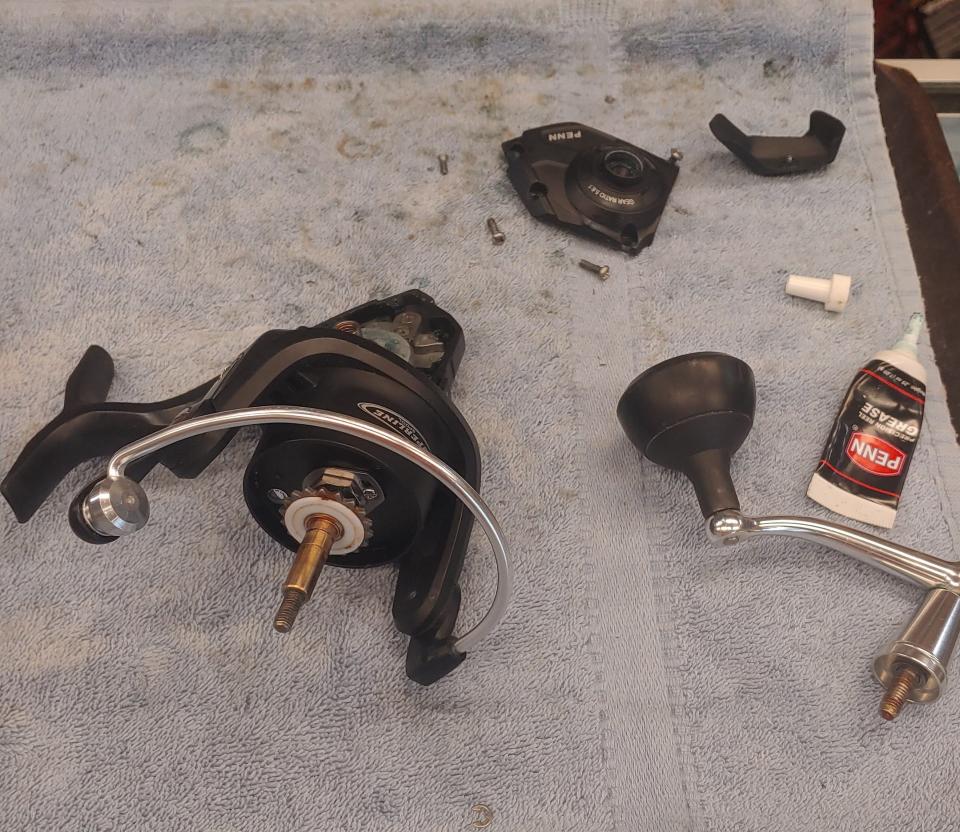
Fail to do this often enough, and before long you’re going under the hood of that reel to find out why it’s clacking and clanking or, worse yet, maybe "all stove up," as the Boys from Macon might say.
Granted, even a properly loved fishing reel will eventually need some TLC — specifically, a little lubrication, if we can talk.
WILD CATCHES The octopus is out there, you bet, and so is the seahorse; send your pics!
BOAT BEERS? Rules on the water are a bit more relaxed, but take it easy | FISHING REPORT
Afraid? Sure, those are tiny screws, and frankly, once under that hood, there are a few more moving parts than you might’ve been expecting. There are some instructional videos out there and they’ll guide you along — frankly, enough time on YouTube, and you can do brain surgery.
But if you’re still hesitant, head to Beach Street in Daytona Beach’s historic downtown, and you’ll find an equally historic part of the local fishing scene — The Fishin’ Hole, a bait shop in business for some 64 years, with Gene and Lisa Lytwyn running things for the past 34 of those years.
It’s one of the few full-service shops remaining. They’ll not only respool your reel with brand new line, but if needed, Gene will break out the tiny screwdriver, settle into a small bit of counter space reserved for such things, and dive into the guts of your fishing reel.
His tools: Small bottle of oil (Penn makes a specific marine oil, but 3-in-One works), tube of grease, rag, and if needed, some mineral spirits to clean bits and pieces.
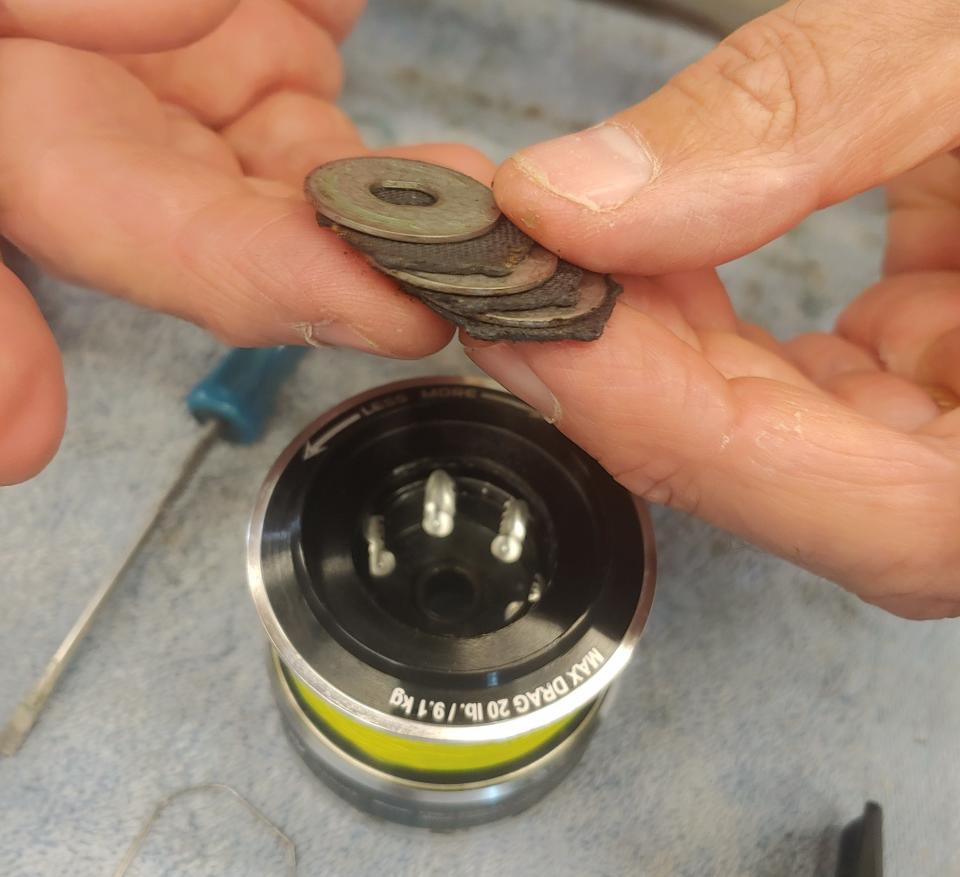
Gene is among those who suggest you never use WD-40 or similar products on your fishing gear. It’s bad on fishing line and frankly doesn’t do what’s needed inside the reel.
Gene starts by unscrewing the drag cap and popping off the spool, the handle, and finally the lower cap that exposes the ball bearings and gears.
“For general maintenance, that’s about as far as you need to go,” he says. “Grease for the gears and shafts, a drop or two of oil on the rest.”
But let’s say there’s an issue, not just routine maintenance needed. Maybe you dropped your reel in sand, or worse, in salt water. Now your drag is gummed up. Stay tuned, you’re about to learn something.
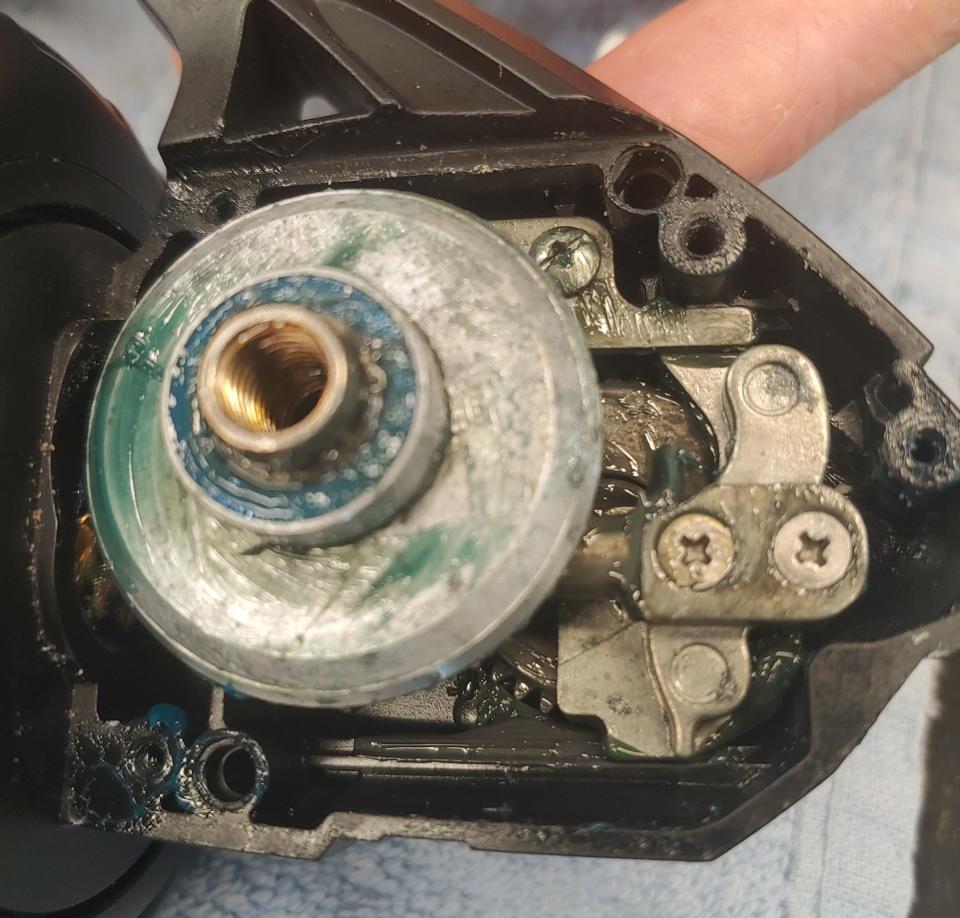
“See this retaining ring, it holds the drag washers in place,” Gene says, pointing out a thin piece of metal exposed after removing the drag cap.
Wait. Washers? Yes, there two or three washers you can remove after removing that retaining ring.
“If you get sand in there, or if the grease has been in there for a long time, you might want to wash all this,” Gene says. That’s where the mineral spirits come into play.
Also, pay attention to the order in which the washers came out, because they MUST go back in that order or your drag won’t drag — at least not properly.
Here’s a common problem: “I’ll have people tell me, my reel is making noise, but only when I’ve caught a fish and there’s tension on the line.”
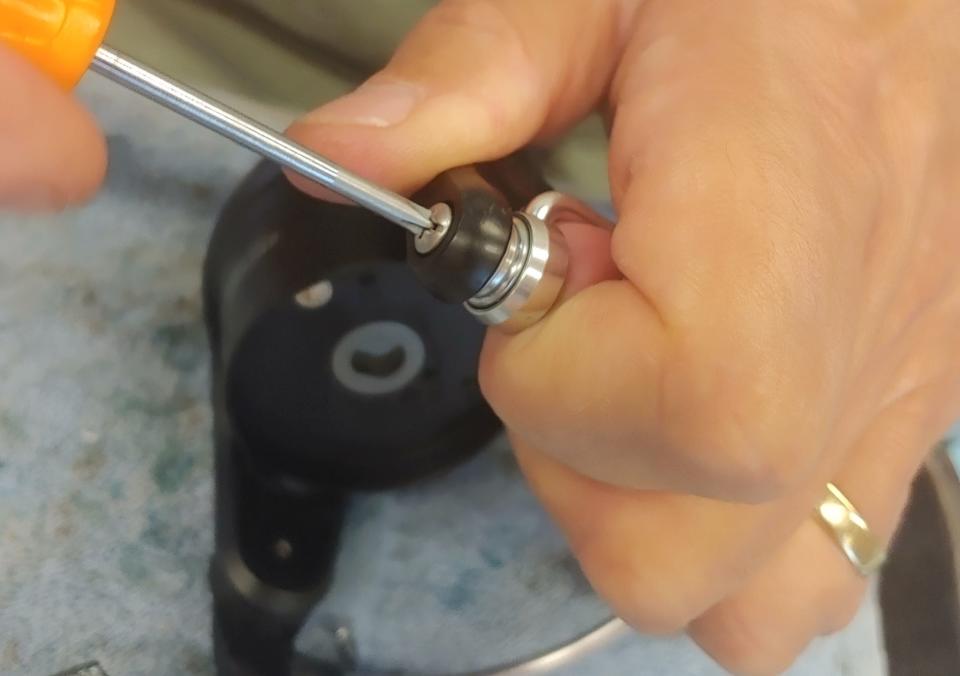
And a common solution: “There’s a single ball bearing inside the line roller,” Gene says, pointing to the hinge of the bail arm, where removal of yet another small screw exposes the potential noise maker. “The roller might not be turning smoothly, so a drop or two of oil on that ball bearing should fix it.”
Depending on how often you use your gear, Gene thinks a once-a-year look-see inside your reel, with that wee-bit of oil and grease, should keep things humming. Too much oil and grease isn't a good thing.
“If you fish once a week, or every other week or so, once a year is a good idea,” he says before stating the obvious: “Or, if you start having trouble with your reel.”
You can do this. Promise. Or, lacking confidence, take your reel to Gene, and for a small fee you can have him get your reel back in gear and get a lesson along the way.
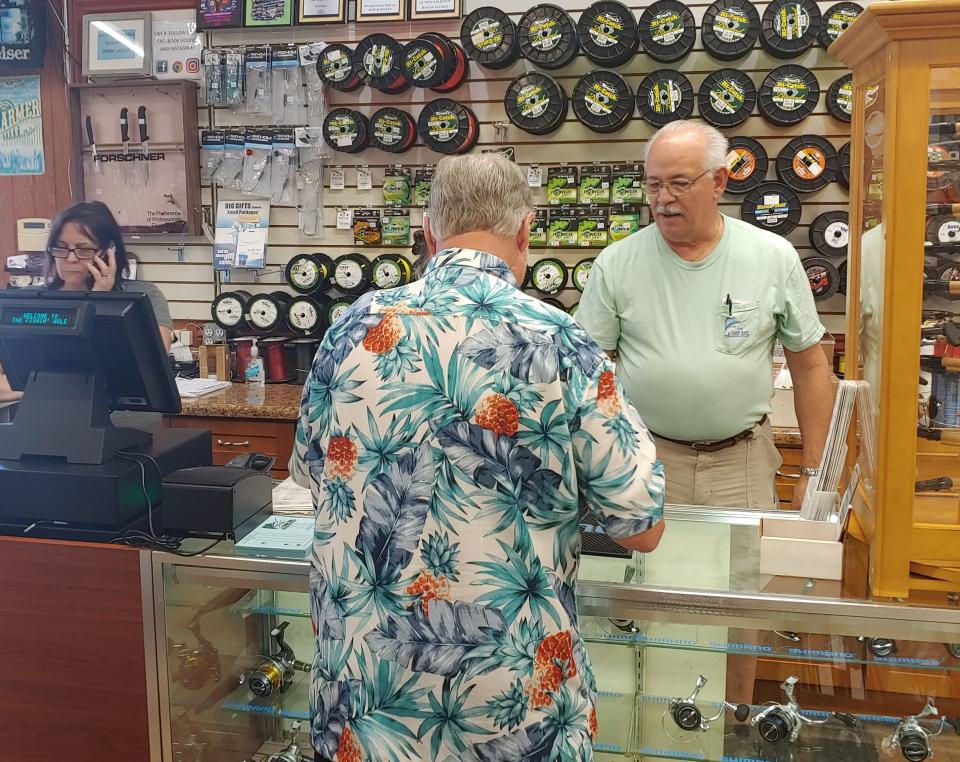
Now, in between those annual maintenance calls, here’s some Capt. Obvious advice.
“Spray everything off with the water hose after each fishing trip,” Gene says. “You’re not trying to shoot water inside the reel, just rinse the exterior of the reel. You’re just trying to remove the salt and debris you’ve gotten on it to slow down the corrosion. And wash off the whole rod, to make sure you’ve cleaned the guides and tip.”
If the weekend weather forecast follows through on its current threat, the next few days might be a good time to hit the garage for a lube job.
Halifax/Indian River
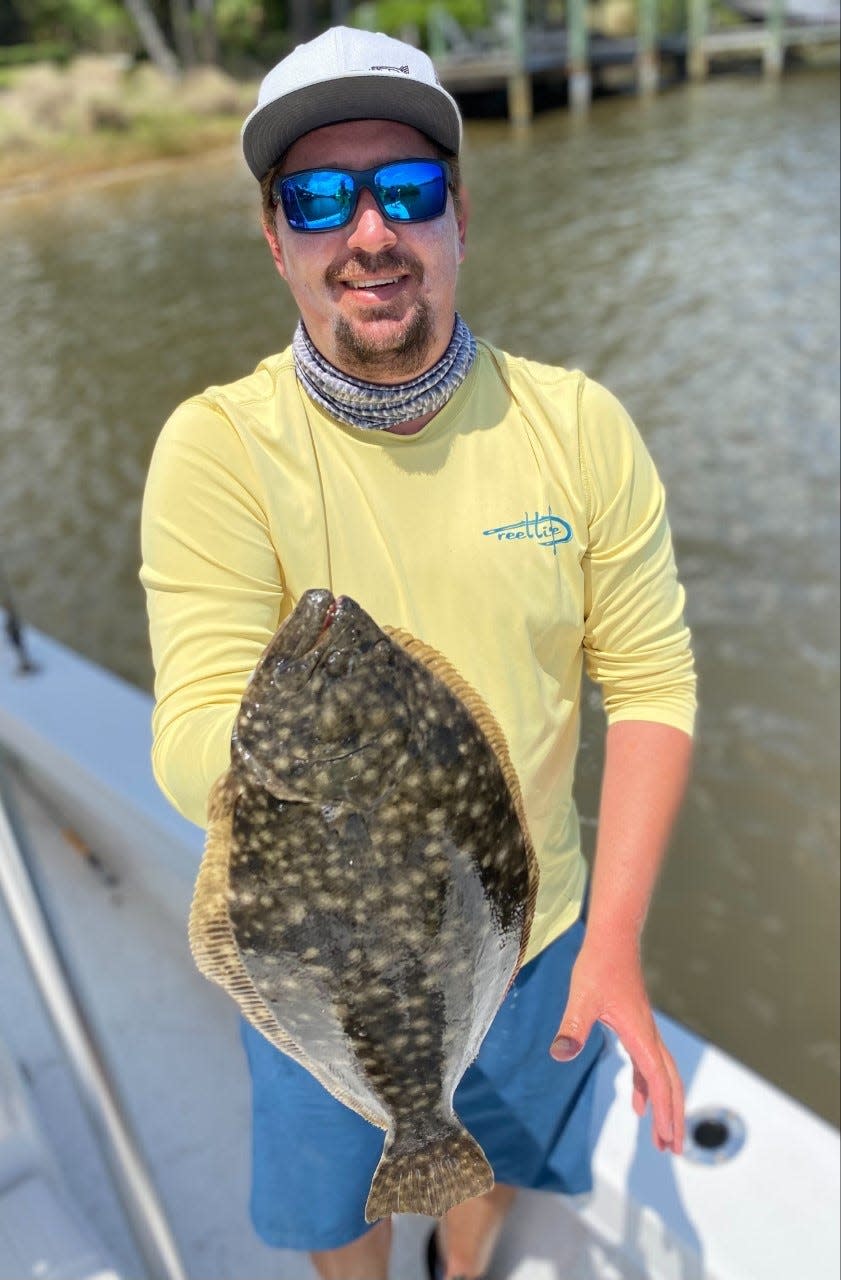
The moody weather has been, and will be, clouding the fishing scene along the intracoastal. But catch a nice morning and toss out some top-waters, and you’ll likely find some trout foraging before things warm up.
As stated last week, the mangrove snapper are starting to get their summertime party started, and will soon become regular catches around bridges, docks and, yes, mangroves.
Capt. Jeff Patterson (Pole Dancer) says he found a big school of tarpon in Ponce Inlet this past week, along with a school of snook along the jetties, "but I only got one to bite," he says.
While he's also finding reds at the inlet, things have been slow inshore.
To the north, at Granada Bridge Bait & Tackle, Ike Leary says he’s seeing (and hearing about) large black drum coming up to the planks. Along with that and the mangrove snapper, Ike says, sharks are still scouring the river in ever-increasing numbers.
Also, still throughout the ICW, ladyfish are igniting drags with their pulls and leaps. Too bad they’re basically inedible, because they’re a lot of fun to catch.
Surf
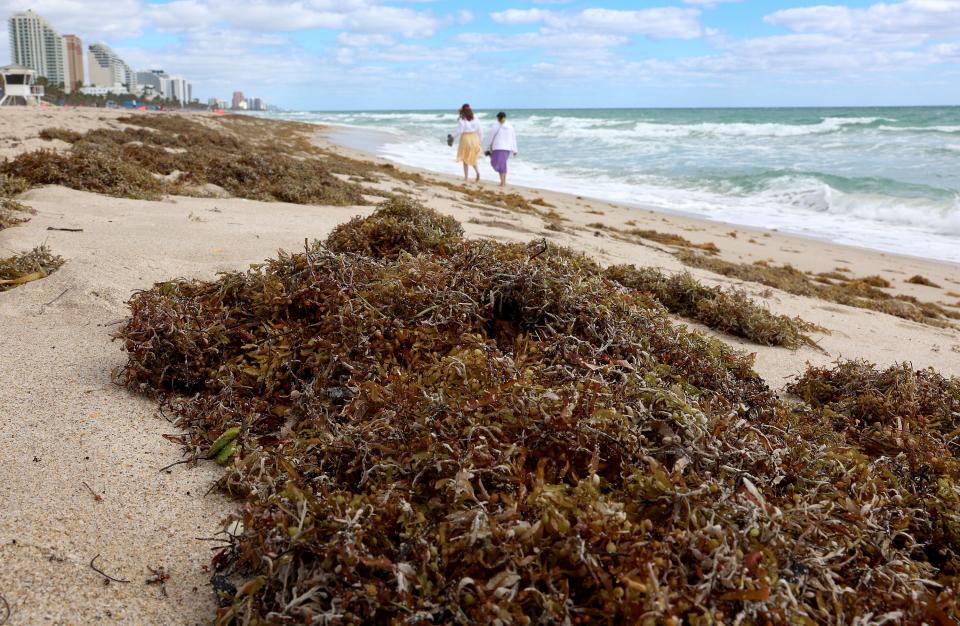
For a few weeks now, we’ve heard talk of a mass of sargassum seaweed heading this way in the Atlantic — about the size of a small continent, to hear some tell it.
Guess what … it’s begun trickling in.
“Today, loads of seaweed showed up,” Marco Pompano said earlier this week. “It makes it almost impossible to fish. In between those times, though, I’ve been catching pompano.”
Some good-sized whiting and big bluefish are also available wherever you find weed-free water.
Offshore
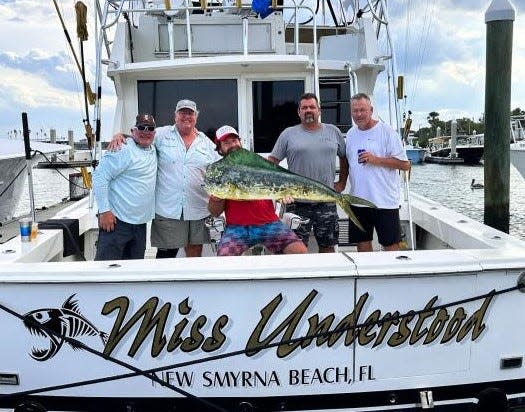
The ongoing stubbornness of the marine forecast took a bite out of last weekend’s 22nd annual Offshore Challenge, sponsored by the Halifax Sport Fishing Club.
The three-day tournament targets kingfish, wahoo and mahi, but with conditions shutting down most of the weekend, only the mahi division was settled. That win went to the Miss Understood, out of New Smyrna Beach, and the team of Jason Larkin, Don Withers, Billy Tarver, Ernie Endicott, and Scott Gosney — with a catch of 33.2 pounds.
Flagler
Capt. Mike Vickers (Hammock Beach Bait & Tackle) said a customer arrived midweek to show off “several” bluefish he pulled out of the Atlantic — all in the 7-10 pound range.
Elsewhere, he says, “The fish have been hit-or-miss for the most part.”
The usual fare is available if you hit the right-place/right-time combo in the river and canals, and when the wind settles, the Matanzas bridge area is still seeing sheepshead along with flounder, black drum and a few other proper edibles.
It’s getting to be that time of year, and sure enough, Capt. Mike says he’s hearing about good-sized tarpon mingling in various canals off the intracoastal.
St. Johns
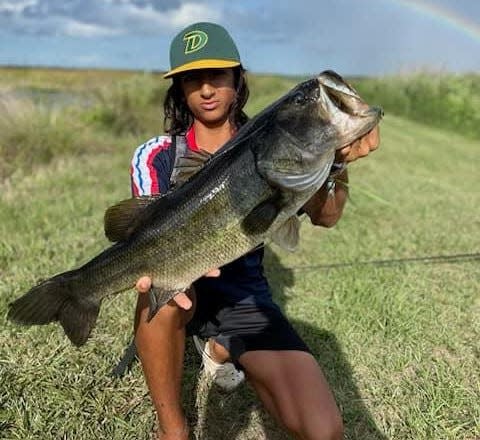
There’s a full moon coming next Friday (May 5), so Kerry McPherson is dusting off the welcome mats at his South Moon Fish Camp in Astor. The annual Georgia convoy will be heading his way.
“Those folks will be coming down to fish for bluegill and shellcracker on the beds,” Kerry says. “Crappie are still around, too.”
The fishing in his area has a time-honored pattern, but lately, Kerry says, he’s noticed a new trend.
“This is something new for us, people starting to night-fish around here,” he says. “And some guys are doing well, fishing around structure. Fishing around the Astor bridge has been good. Night-fishing has never been big here, never caught on. It’s something new to our area.”

Don’t get used to it, because by summer, the nighttime skeeters will blanket you without let-up.
“When the bugs get bad, you can’t hardly go out there at night,” Kerry says.
To the south in DeLand, Capt. Bryn Adams (Highland Park) says the bluegill bite is strong.
“Fishermen are doing best using live worms or crickets, fishing up against the bank, mainly in the Norris Dead River,” she says.
“It won’t be long before the warmouth really come in, too, and for that I’d use live minnows.”
Bass and stripers still to be found in the main river, Capt. Bryn says.
Halifax Sport Fishing Club
The HSFC’s annual Special Needs fishing event is next Saturday (May 6) under the Dunlawton bridge in Port Orange, from 9 a.m. to 1 p.m.
Participants can sign up beginning at 8:30, and the club is still accepting volunteers to help with various chores. For more info, either call Helen Klenk (386-547-1813) or visit the club’s website at HSFC.com.
Hook, line and clicker: Send us your fish pics
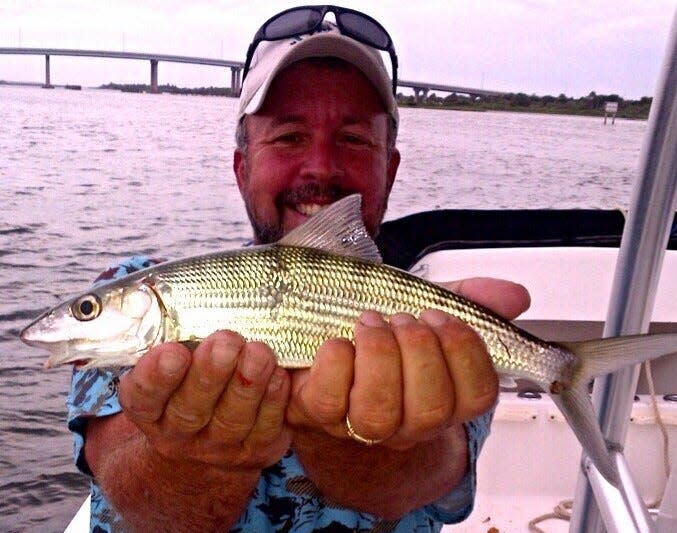
We want to see your most recent catch. Email your fish photos to ken.willis@news-jrnl.com.
Please include first and last name of angler(s), as well as type of fish (we're occasionally stumped). All are included with our online fishing report, and some occasionally make the print edition.
Along with recent catches, we're also looking for your strangest catches from local waters — seahorse, octopus, gator, boot, anchor ... whatever.
Do I need a fishing license?
You can find all the license info, including exemptions, on Florida's Fish and Wildlife Commission website: MyFWC.com. But the basics are: No: If you're 65 or older, 15 or younger, you don't need a license. No: If you're fishing with a licensed guide or charter boat, both of which purchase commercial licenses that cover their customers. Yes: Most everyone else, including visitors from other states. Yes: Even if you're a shore-based angler (shoreline, dock, pier, bridge, etc.). However: The shore-based license is free . . . But: You still need to register for that free license.
Where do I get a license and what does it cost?
Many bait shops sell licenses, as do the bigger retailers (Bass, Dick's, Walmart, etc.). Florida's FWC uses a third-party site for buying or renewing fishing licenses: GoOutdoorsFlorida.com. The cost: $17 for an annual license. Don't forget: Whether you're fishing fresh or saltwater, you need the specific license. Freshwater and saltwater licenses are both $17 annually.
I’m here on vacation, do I need a license?
Yes you do, and they're also available at GoOutdoorsFlorida.com or certain bait shops and big retailers. Cost: $17 for three days, $30 for seven days, $47 for a year.Also: Non-residents need to purchase that license even if they're just fishing from shoreline or shore-based structures. (Florida residents need that license, too, but they're free.)
This article originally appeared on The Daytona Beach News-Journal: FISHING REPORT: For reel performance, try grease and lubrication


